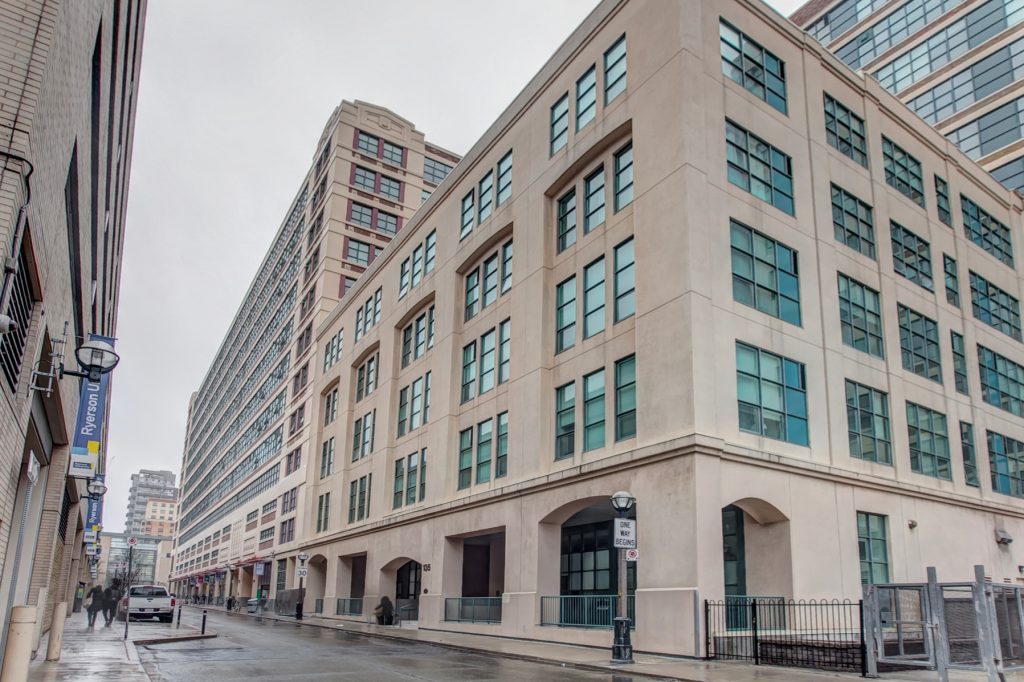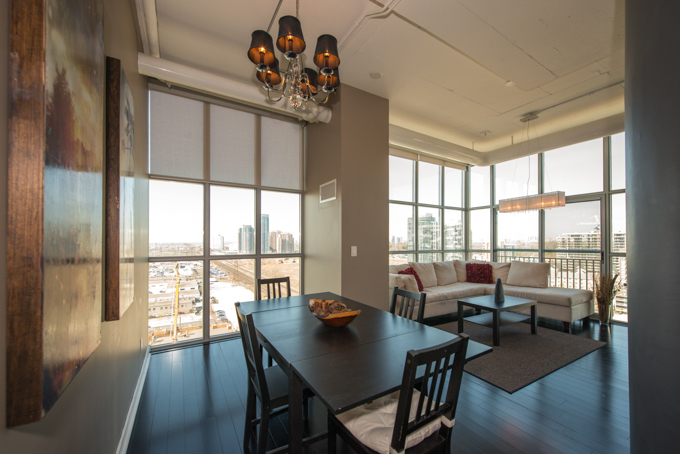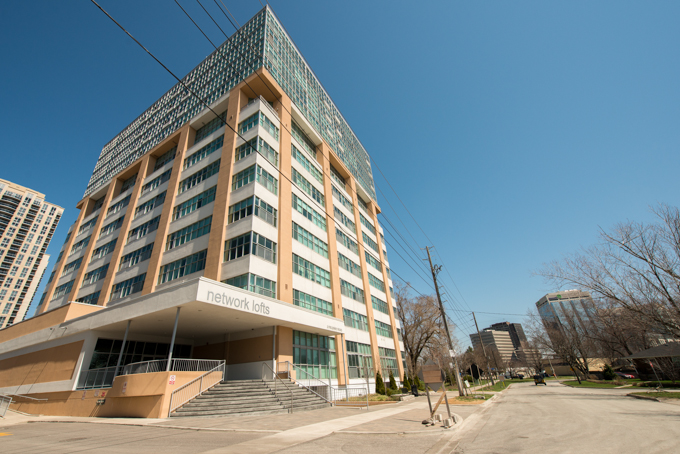
December 13, 2018 | loft
Some will argue that soft lofts are sad imitations of the hard loft original. At best, they mimic the industrial look of hard lofts, the converted factories, churches and warehouses of 100 or more years ago. Soft lofts are new. Built in your lifetime. They have not been converted into living spaces like their hard loft cousins. And in order to understand what the soft loft strives to be, let’s first take a look at hard lofts.
In Toronto, these hard loft cousins include the Merchandise Lofts, the Toy Factory Lofts or the Network Lofts, to name a few. Here is a perfect example at the Toy Factory Lofts from one of my past listings:
As you can see, hard lofts are often characterized by high ceilings, exposed brick, giant windows, open layouts, often containing wood or steel beams and exposed pipes and duct work.
Hard lofts often appeal to the folks who don’t want the cookie cutter layout. They say “no” to standard Toronto condos. Some feel the hard loft has an artsy, bohemian vibe, even though many artists of Toronto could not afford this kind of loft living any more. These hard lofts are also considered to have a solid structure with requirements for industrial buildings, even when construction happened way back in 1910. They generally have stronger support and thicker concrete floors than many current concrete buildings.
Lofts in Toronto have always been an easy sell and it didn’t take long for developers to see an opportunity here. So, along came soft lofts. The name “soft” loft implies a half-realized version of the hard loft, but really they are somewhat a hybrid between a regular condo and a hard loft. The idea with soft lofts is to deliver some of the same features of hard lofts but in the form of a brand new build. In some ways, this can be a good thing. Everything has been updated to have the conveniences of a modern loft and even to offer things many hard lofts rarely do, like more amenities.
Still, the term “soft loft” is a loosey-goosey term that has been thrown around rather carelessly. I have seen many agents and developers advertise something as a soft loft, and I can barely tell the difference between the soft loft and a regular condo. A few condo units are even advertised rather misleadingly as lofts, even when they were not originally sold as lofts, nor do they have any of the features of a loft.
Like soft lofts, hard lofts do not come with a set of rules that qualifies them with official “loft” status. Some hard lofts don’t have high ceilings or huge windows, even when they are converted from a warehouse. But those hard lofts have a unique feel to them and they still attract the buyers. This previous listing at the Bakery Lofts is considered a converted hard loft even though it does not have the huge windows, exposed piping and vents. It also has a rooftop deck, which is unusual for a hard loft. It does have the polished concrete floor and open layout.
Soft lofts are appealing as well, but their demand can vary widely. And though many consider them to be a second rate version of a hard loft, there are some standouts. And really, who cares if it is called a loft or not. If it is unique, and not a cookie cutter, does it matter if it’s called a loft?
If you are drawn to the soft loft idea, here is the best tip I can give you: Go for a soft loft in a building that contains both hard and soft lofts as part of the condo building. The developers will be, or would have been, under more pressure to match the style of soft and hard portions of the condo. That way, the soft loft will more likely contain the great features of the hard loft, and not just the marketing term with the word “loft” in it when there is very little “lofty-ness” about it. Some buildings like this include the Robert Watson Lofts and the Chocolate Factory Lofts.
There are buildings that are great stand-alone soft lofts. I like Pure Spirit Lofts at 33 Mill Street in Corktown.
But not all soft lofts are build the same, so be prepared! Sometimes the exposed pipes and ducts of the hard loft are behind the drywall instead. Often the polished concrete floors have been replaced with hardwood or broadloom instead. Windows may not be as big, nor ceilings as high. Still, some do strive to be impressive, and have a less cookie-cutter look. Soft lofts have the amenities that hard lofts often lack. They are more likely to have balconies. And very important to some, they are more likely to have parking. Many hard lofts are restricted on the number of parking spaces they can have. Some have none at all, like the Feather Factory Lofts in Dundas West. Why not? Well, warehouses in 1900 were not built to support having parking underneath them. If there is a new portion of the loft condo in a hard and soft loft combo, that is often where you’ll find the parking. And in some rare cases, like Abbey Lofts in High Park, there is parking under the original church structure.
So, it comes down to you. Hard lofts will often deliver all things your loft imagination demands. It’s the real deal. It comes with a rich history and a coveted unique layout. They do tend to be more expensive. One less expensive Loft is the Network Lofts at Bloor and Islington that is converted from an old office building. A well kept secret as far as I’m concerned if you are okay living that far west. This is what it looks like.
Soft lofts are not bad though. Yes, they are a mere imitation of the hard loft, but if you choose wisely, you can have the uniqueness of a hard loft with the conveniences of a standard condo. The problem is the use of the term “loft” in so much marketing. In some soft lofts, you may be falling for the name “loft”, but there may be nothing lofty about it. Do your research!





